15 Lead Generation Strategies & Tactics That Work
Lead generation is a vital part of any business. Without leads, you don’t have customers. And without customers, you don’t have revenue. So, how do you go about generating more leads? You can leverage countless lead generation strategies and tactics, but I’ll cover 15 of the most effective in this article.
Table of Contents
What is a Lead?
Before diving into the strategies, let’s quickly define a lead. A lead is a potential customer who has expressed interest in your product or service. This could be someone who has signed up for your newsletter, requested a demo, given you their contact details, or engaged with your content somehow.
So, a lead has raised their hand and said, “I’m interested; tell me more!”. Your job is to nurture that lead by providing them with more information until they are ready to purchase.
#1: Content Marketing
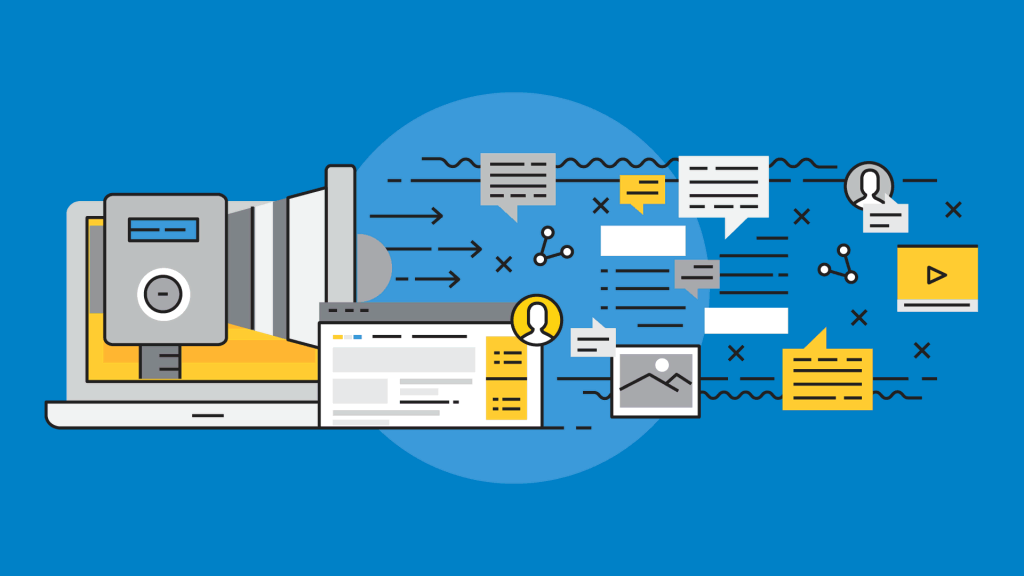
Content marketing is creating and distributing valuable, relevant, consistent content to attract and acquire a clearly defined audience. The goal is to drive profitable customer action by educating, entertaining or inspiring your audience with excellent content.
Some of the most popular forms of content used for lead generation include:
- Blog Posts: Publish regularly on topics that resonate with your audience. Include calls to action in each post to capture leads.
- eBooks & Whitepapers: Create in-depth guides that solve reader problems. Gate them behind a lead capture form.
- Videos: Entertaining and educational videos are hugely popular. Upload them to YouTube with a solid call to action.
- Podcasts: Launch your own branded podcast and share your expertise. Include lead magnets in your show notes.
- Case Studies: Showcase customer success stories with accurate results. These build trust and credibility.
- Infographics: Visually engaging infographics tend to get shared widely on social media, driving referrals to your site.
The goal remains no matter what content format you choose: provide so much value that readers happily trade their contact details in exchange!
#2: SEO
SEO stands for search engine optimisation. It refers to improving your website and content to rank higher in search engines like Google. Most people don’t search past the first page of Google, so appearing in those top spots is critical for driving relevant organic traffic to your site.
Here are some essential SEO strategies to help you get found:
- Conduct keyword research to identify high-volume, low-competition terms your ideal customers seek. Incorporate these keywords naturally throughout your website and content.
- Create blog posts targeting those primary keywords while interlinking them to related posts on your site. This helps search engines better understand your structure.
- Include your target keywords in metadata (title tags, meta descriptions, image alt text, etc.) to help search engines understand your content’s topic.
- Build high-quality backlinks from other authoritative websites to signal to Google that your content is valuable. Guest posting and link inserts are common tactics.
- Improve website speed and mobile optimisation so visitors (and search engines!) have the best user experience. Slow load times increase bounce rates.
- Regularly analyse your SEO through analytics to see which pages rank well, identify opportunities, and track progress over time.
SEO takes time, but the compounding effects are well worth the investment. The leads you generate organically will convert at higher rates, too, since they’re actively searching for solutions.
#3: Paid Advertising
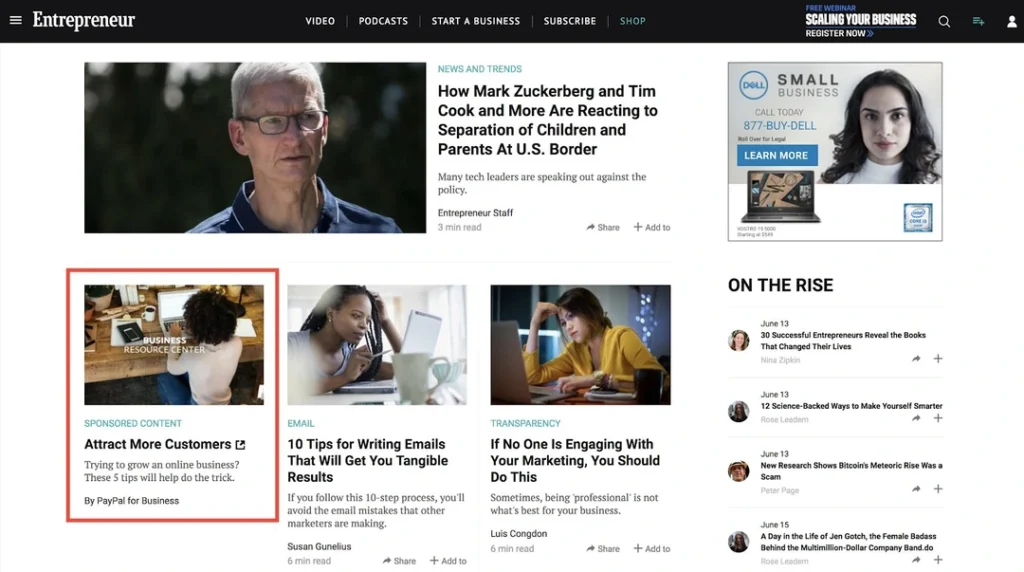
Paid advertising refers to ads you pay to promote on platforms like Google, Facebook, Instagram, Twitter, Quora and more. The main benefit of paid ads is that you can precisely target those who see your ads based on location, demographics, interests, behaviours, and more.
Here are some of the most popular paid advertising tactics:
- Google Ads: Target users based on their search intent by bidding on keywords they’re searching for related to your offer.
- Facebook Ads: Run ads directed at specific “lookalike audiences” who match your existing customers.
- LinkedIn Sponsored Content: Promote content directly in the LinkedIn feed to a professional demographic.
- Quora Ads: Sponsor relevant answers to questions your audience is asking about topics related to your business.
- Display/Banner Ads: Less targeted but can help brand awareness. Appear on niche sites your audience visits.
- YouTube Video Ads: Pre-roll and mid-roll video ads let you tell a story before videos play. Highly engaging.
- Retargeting Ads: Chase visitors who left your website around the internet, reminding them to come back!
The key with paid ads is analysing performance and only investing where you see a positive return. Targeting the right people is crucial for conversions.
#4: Email Marketing
Email marketing is the unsung hero of most lead-generation strategies. While it’s not the flashiest tactic, the data shows it consistently drives results. Over 3.9 billion people globally use email today. And email boasts a median ROI of 122%, according to Campaign Monitor.
Here are some of the main email marketing plays for lead generation:
- Opt-in Offers: Provide something of value (like an eBook, checklist, or video course) in exchange for a website visitor's email address.
- Webinars/Virtual Events: Host a live or automated webinar that requires registration to attend. Follow up with helpful content.
- Drip Campaigns: Automated email series that send personalised messages tailored to different user segments over time to convert leads.
- Subscriber Surveys: Ask email subscribers targeted questions to determine their challenges, interests and buying signals so you can provide relevant recommendations.
- Coupons/Discounts: Strategic coupon emails tempt subscriber purchasing while allowing you to track ROI on those exclusive offers.
Email is inexpensive to implement, highly trackable, and allows for personalisation powered by the first-party data you capture over time. Treat your list well and reap the benefits.
#5: Social Media Marketing

According to the University of Maine, there are 4.8 billion social media users globally as of Q1 2024. The major social platforms present massive lead gen potential, provided you have a smart social strategy. Here are some best practices:
- Network Analysis: Audit where your audience is most active. Focus your efforts accordingly instead of spreading yourself thin, trying to master every network.
- Hashtag Research: Identify relevant hashtags frequented by your audience to tap into more extensive conversations and get discovered. #hashtagresearch
- Thought Leadership: Establish yourself as an industry leader by sharing valuable insights and commentary on trending news.
- Contests/giveaways: Gamify social engagement by running competitions and free giveaways in exchange for follows, shares and user-generated content creating buzz.
- Chatbots: Deploy chatbots to qualify leads 24/7 from social platforms through automated conversational question-and-answer dialogues that mimic real people.
- Paid Amplification: Most social platforms offer advertising capabilities. Create highly targeted campaigns around your posts to expand their reach to qualified individuals.
The keyword with social is providing value. Think engagement over promotion. By establishing authority and credibility with value, the leads will come.
#6: Referral Programs
Referrals convert seven times better than other leads. Yet most businesses leave this powerful revenue channel largely untapped simply because they fail to ask. A formalised referral program fixes this oversight.
Here are some components to consider:
- Make it Obvious: Include referral asks on your website, in your email signatures, inside thank you pages and anywhere else that makes sense.
- Offer Incentives: Provide financial rewards or special perks for valuable word-of-mouth marketing by your raving fans. Free products/trials work great.
- Measurement System: Track referral performance end-to-end, from initial generation through lifetime value. This allows you to optimise the program.
- Nurture Referrals: Treat referred leads like gold, expedite their experience, and keep referring partners updated on their advocacy wins.
- Gamification: Tap into our innate human love of games and competition to accelerate participation. Leaderboards, badges, and tiered reward levels skyrocketed results.
Getting creative with your referral program design can move the needle on new lead generation while strengthening existing customer loyalty through reciprocity.
#7: Networking Events

Online tactics offer excellent lead generation scale, but nothing beats in-person relationship building and networking for closing deals. Getting out from behind your screen to attend relevant industry events, conferences, and meetups serves multiple lead-gen purposes:
- Serendipity: Conversations happen organically, leading to unexpected partnerships and opportunities just by being in the room.
- Referrals: Event attendees often make recommendations and provide intros to others in their network who may benefit from your offering.
- Warm Introductions: Even cold leads you meet become warmer simply through meeting in person and putting a face to your business.
- Speaking Opportunities: Position yourself as an expert by securing speaking sessions at industry conferences. This instant credibility lands clients.
- Job Fairs: Universities and community hiring events are hotbeds to connect with top talent prospects before competitors.
- Target Outreach: Many conferences publish a list of attendees in advance. Research the people you want to meet and then set meetings.
Don't be the awkward wallflower once you arrive, either. Come prepared with plenty of business cards; conversation starters focused on helping others, and a strategy to capture any promising leads for prompt follow-up.
#8: Partnerships & Strategic Alliances
Partnerships involve formal agreements to promote each other's products, services or events to each audience. The partnerships can take many shapes and forms but always have clearly defined terms to maximise the value for both parties.
Some examples include:
- Free Content swaps: Provide guest posts, interviews or joint reports/guides to share across audiences.
- Cross-Promotions: Run contests, bundled offers or coordinated discounts, driving customers to each other. Real win-win.
- Affiliate marketing: Pay partners a bounty for anyone converting from their referrals. Performance-based.
- Event Co-Marketing: Split costs to sponsor or exhibit at the same conferences, tradeshows, webinars, etc. Expand reach.
- Widget Embedding/API Integrations: Technologically integrate each other's apps/software into your user experiences. Expand functionality for everyone.
The core concept of partnerships is shared investment for mutual benefit. This makes them powerful lead generation force multipliers compared to going it alone.
#9: Popup Offers
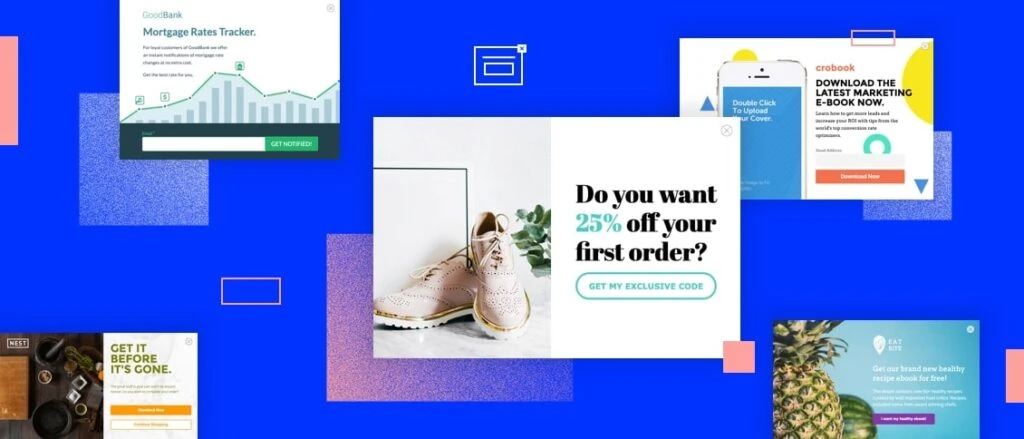
Popup offers refer to those little notification boxes that appear over website pages offering something enticing in exchange for an email address or small commitment.
Commonly seen popup types include:
- Exit-intent popups (trigger when visitors signal they’re about to leave)
- Scroll-based popups (% page scrolled triggers)
- Timed popups (display after X seconds on the page)
- Click popups (require an explicit click to trigger)
- Content Lock popups (gate access to content behind opt-in)
Some popups incentivise the opt-in with the following:
- eBooks, checklists or printable templates
- Video training series or courses
- Entry into a contest, sweepstake or lottery
- First-month free trial of your software/service
- Exclusive coupon or special discount
The key with popups is demonstrating enough value in your irresistible offer that visitors happily exchange their email addresses without feeling like you forced them. Test different popup variations to find the combination that converts best. Just don’t overdo the frequency and annoy visitors.
#10: Landing Pages
Dedicated landing pages—which often use popup forms as described above—make it stupidly simple for interested visitors to convert into leads. Unlike busy homepage designs that distract visitors, focused landing pages speak directly to your target persona and prompt one desired conversion action through clear messaging and purposeful form fields.
Some best practices for higher-converting landing pages include:
- Single Purpose: don’t try to accomplish multiple goals on one page. Keep it simple.
- Video Introduction overcomes trust issues by putting a relatable human face on your business.
- Show Social Proof with customer logos, reviews, and case studies to establish credibility and social signalling.
- Risk Reversal Guarantees like money-back offers reduce anxiety, preventing visitors from converting.
- Minimal Required Fields on your form balance needed info with quick conversion. Add non-essential questions post-opt-in later.
- A clear, Responsive Layout ensures critical info catches the eye fast on any device. No pinching/scrolling to find your CTA!
Run A/B split tests of your landing page experience to let the data inform design tweaks towards peak lead capture performance. Master this skill and watch qualified prospects pile up automatically with every new visitor.
#11: Live Chat Functionality
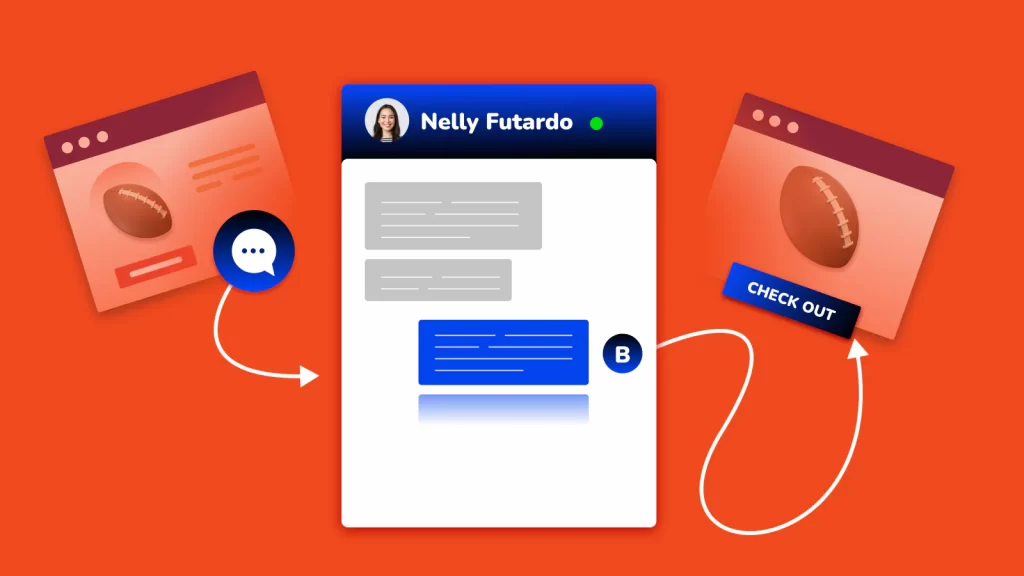
Did you know that adding live chat can increase conversions by 20%, according to SuperOffice? I don’t know about you, but I’m always more likely to convert as a customer when I can quickly ask real-time questions before I buy.
Live chat alleviates the back-and-forth delays of phone calls or email exchanges. It feels more personal than browsing alone, only to abandon your website without answers. Humans naturally appreciate responsiveness.
Some advanced live chat software allows you to:
- See what webpage visitors are viewing to qualify leads
- Automatically trigger proactive chat invitations based on certain visitor behaviours
- Identify and route promising leads directly to your sales reps
- Program chatbots to handle basic qualifying questions, saving human reps for hot leads
- Transcribe and analyse chat records to improve future self-service answers
The technology empowers real-time lead prioritisation, personalised engagements and reduced spending chasing cold outbound leads. Well worth considering.
#12: Webinars
Webinars represent one of the most scalable ways to generate & qualify multiple sales leads in a single sitting. Hosting live webinars or automated evergreen webinars lets you attract registrants for free informative content while capturing their contact data for follow-up selling.
A typical webinar structure walks through the following:
- The problem attendees face
- Common failed solutions showing gaps
- Explanation of your proven methodology
- Case studies demonstrating client success
- Q&A and offers driving conversions
Webinars position your brand as an authority, solving fundamental pain points for your niche in an engaging format. Just be sure to follow up while their interest remains hot. Nurture registrants through helpful drip campaigns and personalised content, keeping your solutions at the top of your mind.
#13: SEO Videos
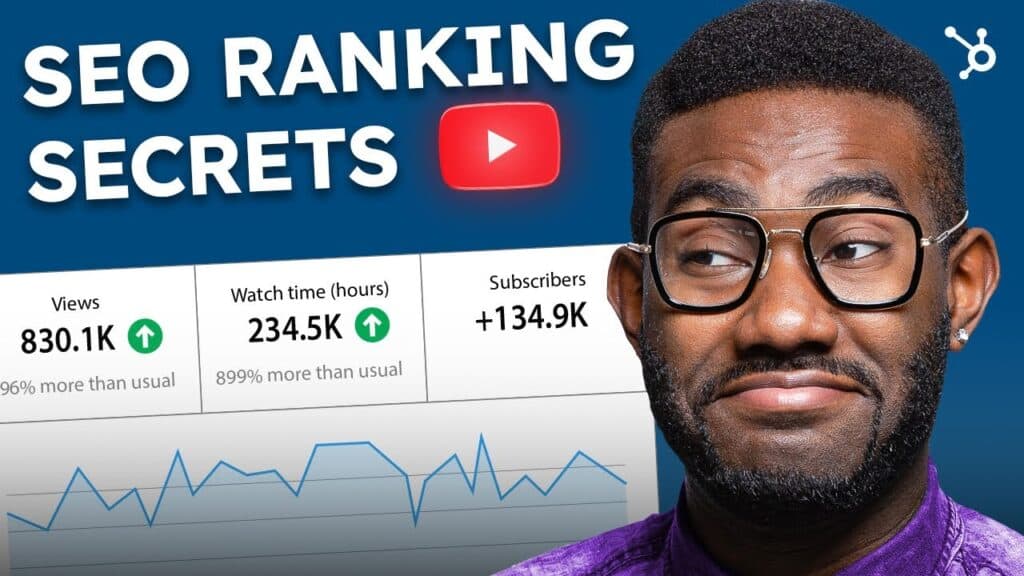
YouTube stands as the world’s second-largest search engine, according to SEMrush. Therefore, publishing videos optimised for SEO represents a significant opportunity to drive organic traffic and capture inbound leads.
Start by identifying relevant topics in which your audience has demonstrated interest through search volume tools like Google Keyword Planner. Build videos addressing common questions and pain points centred on those high-ranking keywords.
Embed clear calls-to-action within each video description to direct viewers to specific landing pages for lead conversion post-viewing.
Additionally, include links in the first minute pointing them to high-value free tools, template downloads or quizzes/assessments to incentivise fast clicks while interest remains peaked.
People increasingly prefer watching videos over reading articles, given shorter attention spans. So, take advantage by providing visual demonstrations of your thought leadership and solutions.
#14: Retargeting Ads
Chances are you currently have hundreds of visitors visiting your website, browsing products or reading your blog content before disappearing forever without converting into leads. Retargeting fixes this wasted opportunity.
They are also known as remarketing; retargeting technology tracks non-converting website visitors anonymously behind the scenes through small cookie files. It shows your digital ads later to users as they browse unrelated websites.
This tactic gives you a second chance to display your offers precisely when they become most relevant again. It reminds forgetful visitors to return to finish an action they dropped previously.
Beyond simple banner ads, you can get creative by retargeting visitors with:
- Social media & YouTube video ads
- Connected TV and programmatic TV ads
- Spotify audio ads while they listen to music
- Custom intent-based ads based on more of their browsing
- Expandable rich media ads with persuasive engagement
Numerous studies cite retargeting boosting site traffic, brand awareness, lead captures and return visit conversions across industries. Make sure to incorporate it into your digital marketing stacks for the lift.
#15: CRM Optimisation
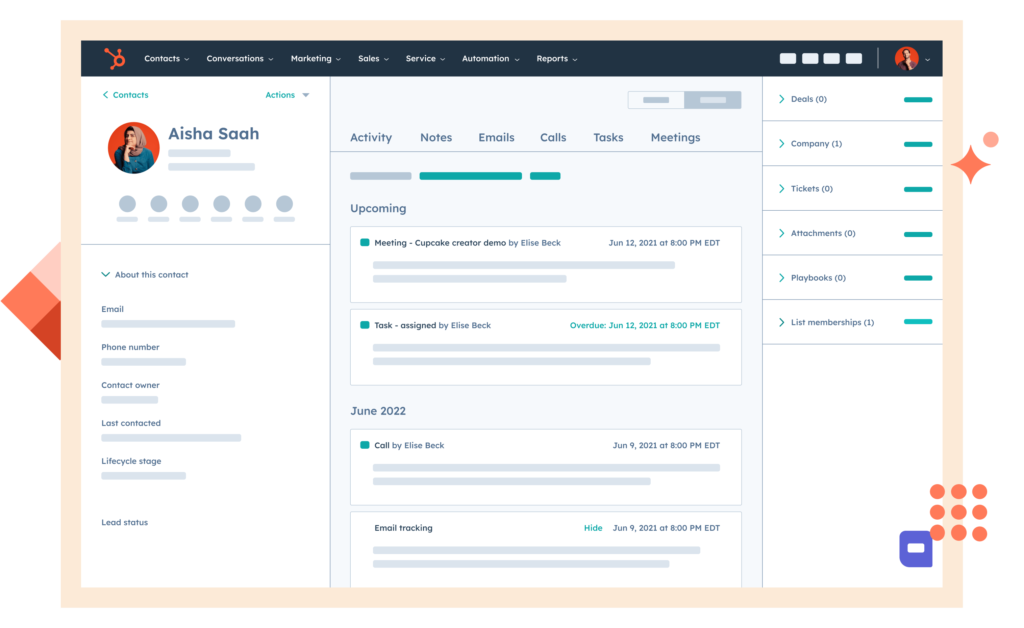
I’ve covered many inbound and outbound lead generation strategies to help you attract strangers to your business. However, roughly 40% of revenue tends to come from existing customers, according to SuperOffice. Tapping your current CRM represents an overlooked goldmine.
Here are some ways to double down on optimising past clientele for repeat sales:
- Resurveys to re-qualify them against new offerings since initial purchase. Needs evolve.
- Lookalike Modeling within your CRM to find more prospects matching ideal buyer attributes.
- Trigger-based interactions send timely, relevant follow-up messages based on their behaviours, needs, and interests captured over time from past engagements.
- Special Case Pricing for proven buyers is more likely to purchase something additional if offered irresistible terms. Free works!
- Loyalty Programs create tiers, points and rewards for taste-making advocates among your base, essentially selling for you through word-of-mouth referrals.
- Win-back Campaigns bring back one-time purchasers who showed high propensity yet
haven’t repurchased for unknown reasons with personalised outreach and re-engagement offers.
The premise is basic – sell to happy, proven buyers before chasing unqualified strangers with no context of your value. Keep your clients engaged long-term; they will pay you back through loyalty, referrals and repeat purchase convenience.
Conclusion & Key Takeaways
Attracting new leads is the lifeblood of growing any business. Without a steady flow of qualified prospects entering your funnel, selling grinds to a halt, stifling sustainable scalability.
Yet, only some companies take a strategic approach to lead generation, relying instead on random tactics without tracking ROI. This wastes the budget on unproductive activities while often ignoring data-driven online and offline channels ripe for automation.
I offered an extensive menu of lead generation strategies for consideration covering content marketing, SEO, paid ads, email, social media, events, partnerships, popups, landing pages, chat, webinars, video, retargeting and CRM optimisation.
While no single approach guarantees success, thoughtfully combining select strategies into an integrated omnichannel plan tailored to your niche amplifies results, overtaking a siloed stance.
Measure baseline metrics before launching campaigns and continually monitor performance indicators tied to revenue and control variables through thorough split testing. Let data guide your optimisations, not assumptions. With enough care and feeding, your personalised lead gen engine will propel sustainable growth for years.
I’d love to open it up for any final questions before wrapping up!
FAQs on Lead Generation Strategies
What are the top 3 most critical lead-generation strategies?
The top 3 most foundational lead generation strategies are Content Marketing, Email Marketing and SEO. Master attracting organic traffic to your site, capturing those visitors with compelling offers, driving conversions and nurturing leads through helpful email follows at scale.
How much of the budget should I allocate towards lead generation?
Ideally, allocate at least 15%-20% of overall revenue towards recurring lead generation and marketing expenses. Divide that budget primarily towards your proven top converting strategies while testing and giving smaller amounts to speculative new channels.
How do I calculate my ROI on lead generation campaigns?
Divide the total revenue driven by your campaigns by their actual costs. For example, if a content offer costs $1000 to promote and generates $5000 in sales, the ROI would be $5000 revenue minus $1000 ad spend = $4000 return. Then, $4000 return divided by $1000 invested equals 400% ROI.
What tools do you recommend for managing leads?
I recommend an integrated CRM like HubSpot or SalesForce to handle capturing lead data, segmentation, lead scoring, customised engagement tracking and workflow automation between your marketing and sales teams, ensuring no inquiries slip through the cracks.
Should I outsource parts of lead generation?
I advise clients to outsource one-off lead gen campaign execution where an agency or freelancer demonstrates expertise. However, strategy ownership, vendor management and performance analysis should remain in-house to retain control over the vision and continuity across efforts.
